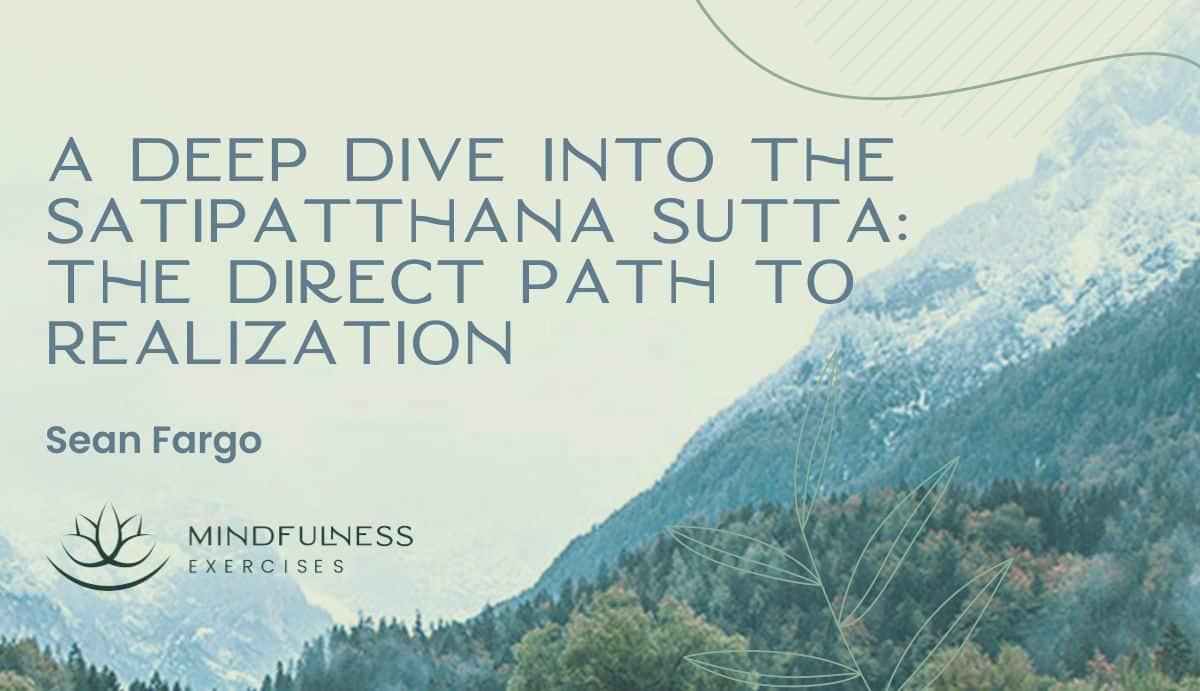Listen now

What if falling asleep during meditation wasn’t a hindrance at all but, rather, was an opportunity to mindfully explore liminal space? The intentional practice of liminal dreaming allows us to begin carrying mindfulness across the threshold between the waking and dreaming state.
In this episode, Andrew Holecek teaches us how to bring mindfulness to liminal states of mind. Liminal dreaming sets the foundation for the more advanced nighttime practice of lucid dreaming, but also, has its own unique benefits. For an overview of this and other nocturnal mindfulness practices, listen to Episode #036, Mindfulness While Sleeping, with Andrew Holecek
Andrew Holecek is an author and spiritual teacher who teaches worldwide on meditation, lucid dreaming, and Buddhist death preparation practices. His books include “Dream Yoga: Illuminating Your Life Through Lucid Dreaming” and “Dreams of Light: The Profound Daytime Practice of Lucid Dreaming.”
This talk is a brief excerpt from Andrew Holecek’s guest teacher presentation to those enrolled in our Mindfulness Meditation Teacher Training Program. Learn more about this unique, online, self-paced certification program at mindfulnessexercises.com/certify
What You’ll Learn in This Episode:
Show Notes:
What is liminal dreaming?
Liminal dreaming is a practice that anyone can do. It can potentially serve as a segway into more advanced nocturnal meditation practices, including lucid dreaming and dream yoga, but has distinct benefits and features of its own. A liminal space is a threshold, a space in between. As we refine our ability to inhabit the world between waking and sleeping, we transform how we locate ourselves everywhere and anywhere.
“The idea of liminality itself [...] is very interesting because once you’re sensitized to liminal phenomenologies, you start to realize there are things like liminal spaces, [...] there’s also liminal experiences, [...] any kind of ‘Now what?’ experience is a liminal experience. And then of course there’s the notion of liminal beings. [...] These qualities of liminality are very interesting in terms of understanding the way phenomena itself operate, and they can expand our awareness and sense of appreciation for liminal principles all together. ”
Experiencing liminality in seated meditation
Meditators often enter into liminal states when practicing, especially if we start to fall asleep while meditating! Typically, we’re instructed to avoid this by applying the antidote and returning to an alert, mindful state. But there is benefit to transforming this obstacle into an opportunity. We can direct our awareness to the liminal experience itself and explore the mind while in this intermediate dimension.
“These are very interesting dimensions where we start to gap out. Usually when we fall asleep there is a continuous stream of consciousness, this kind of narrative of the discursive mind that’s running. [...] And as we start to fall asleep, you’ll notice that certain gaps start to appear between the previous bumper-to-bumper traffic jam of your runaway discursive mind. [...] So that’s one of the classic characteristics of entering the liminal space. And as a mindfulness meditator, you start to notice the decoupling of thought. You start to notice that there are small gaps that start to appear between thoughts, a little bit of space.”
Ways to play with the hypnagogic state
If we can maintain mindfulness as we enter the liminal, hypnagogic state, we might also observe that there is a shift from discursive thought to image. Words become pictures and then brief dreamlets. Witnessing these dreamlets can prepare us for the advanced practice of lucid dreaming. Awareness of the dreamlets is also a means of dream incubation.
“You can actually watch the dream inflate. And if you get really good at this, it doesn’t take long, this is how you can incubate a dream. So for instance, I’m working with a particular issue now where [...] I’m trying to get some guidance around a particular health matter, and one of the things I’m doing is, I’m working with this type of dream incubation. I go to sleep with a particular stream of intentionality involved, which kind of seeds, like seeding the cloud, like seeding the dream cloud.”
Why dream interpretation is not part of the practice
Dream interpretation can be fascinating and helpful, but it is not part of the liminal dreaming practice. Liminal dreaming gives rise to creativity and insight precisely because we’ve gone beyond the logical, thinking, cognitive mind. That said, a liminal dreaming practice can help extend the length of our dreams and can help us to remember our dreams with greater clarity. This makes it easier to interpret our dreams later if we’d like to.
“In the same way that when you’re working with meditation you’re not interested in the contents of your mind, you’re interested in changing your relationship to the content of your mind, you’re not doing therapy when you’re meditating. Meditation is therapeutic, but it’s not therapy. And in exactly the same way when you’re doing these types of practices, you’re not interested in the content in terms of overt dream interpretation, you’re working on transforming that content.”
How meditation helps us with liminal dreaming
As meditators, we already have a head start on liminal dreaming because we’ve been developing a more nuanced relationship to the contents of our mind. The instructions for meditation and liminal dreaming are similar, too. Just as in meditation, it helps to balance our effort between tight focus and open spaciousness. In addition, liminal dreaming depends heavily on establishing an intent.
“Intention in these practices is everything! [...] Etymologically the word is interesting, it literally means to stretch towards. [...] Intentionality allows you to stretch consciousness into previously unconscious domains. It’s like a type of consciousness hacking, right? And so one of the best things you can do, and it’s patronizingly simple, is throughout the day start to set the intention that you ramp up as you’re going to sleep. [...] You start to set a very heartfelt intention that tonight (and don’t just flap your lips, you want to really mean it), ‘Tonight I’m going to experience liminal dreaming.’”
Mindfulness of the awakening, or hypnopompic, state
We can practice mindfulness as we fall asleep, but we can also bring mindfulness to the process of awakening itself, the hypnopompic state that occurs just before we wake up. This practice can help us remember our dreams, and contributes to the continuity of mindfulness that we, as meditators, seek.
“Wake up, don’t move. Or, here’s a very interesting thing, if you already did turn over, return to the position you were in before you did turn over, because very often memories are kind of perfumed, or lodged in the posture itself. [...] And then if you can, you can do exactly what you did on the hypnagogic end, you can do it on the hypnopompic end, work with your mind in that transitional space.
Nocturnal practices as an expression of peak mindfulness
Bringing mindfulness into previously mindless states is what mindfulness is all about. When we are quite literally asleep, we are perhaps as mindless as can be. To bring mindfulness into our sleep state then, is an advanced expression of mindfulness. While it may seem like a lofty task, just by attempting lucid dreaming or the preliminary practice of liminal dreaming we strengthen mindfulness, including those moments when we are relatively awake.
“Even the intentionality to lie down in bed tonight and say, ‘You know what? I’m going to be a little bit more curious. I’m going to use my mindfulness. I’m going to follow my mind as it transitions from overt waking consciousness into this intermediate bandwidth.[...] Even if we don’t have overt lucidity at first, just bringing awareness, mindfulness, into these previously mindless states [...] is to use the skillset of our mindfulness. Replace mindlessness with mindfulness, turn on the light, and start to see dimensions of our own minds and hearts that we’ve never seen before.”
Additional Resources:

About Andrew Holecek
Andrew Holecek is an author and spiritual teacher who offers talks, online courses, and workshops worldwide for students drawn to the nocturnal meditation practices. A long-time student of Buddhism and 3-year retreatant, Holecek blends ancient wisdom with modern knowledge, making the esoteric teachings on lucid dreaming and the Tibetan yogas of sleep and dream, accessible to all.
Andrew Holecek began his study of Tibetan Buddhism in 1987, which eventually brought him to Nepal, India, Bhutan, and Tibet, where he received teachings from many of the greatest masters. A dentist by trade, his travels inspired him to co-found the humanitarian organization, Global Dental Relief. He is a member of the American Academy of Sleep Medicine and the author of scientific papers on lucid dreaming. His books include “Dream Yoga: Illuminating Your Life Through Lucid Dreaming” and “Dreams of Light: The Profound Daytime Practice of Lucid Dreaming.”






